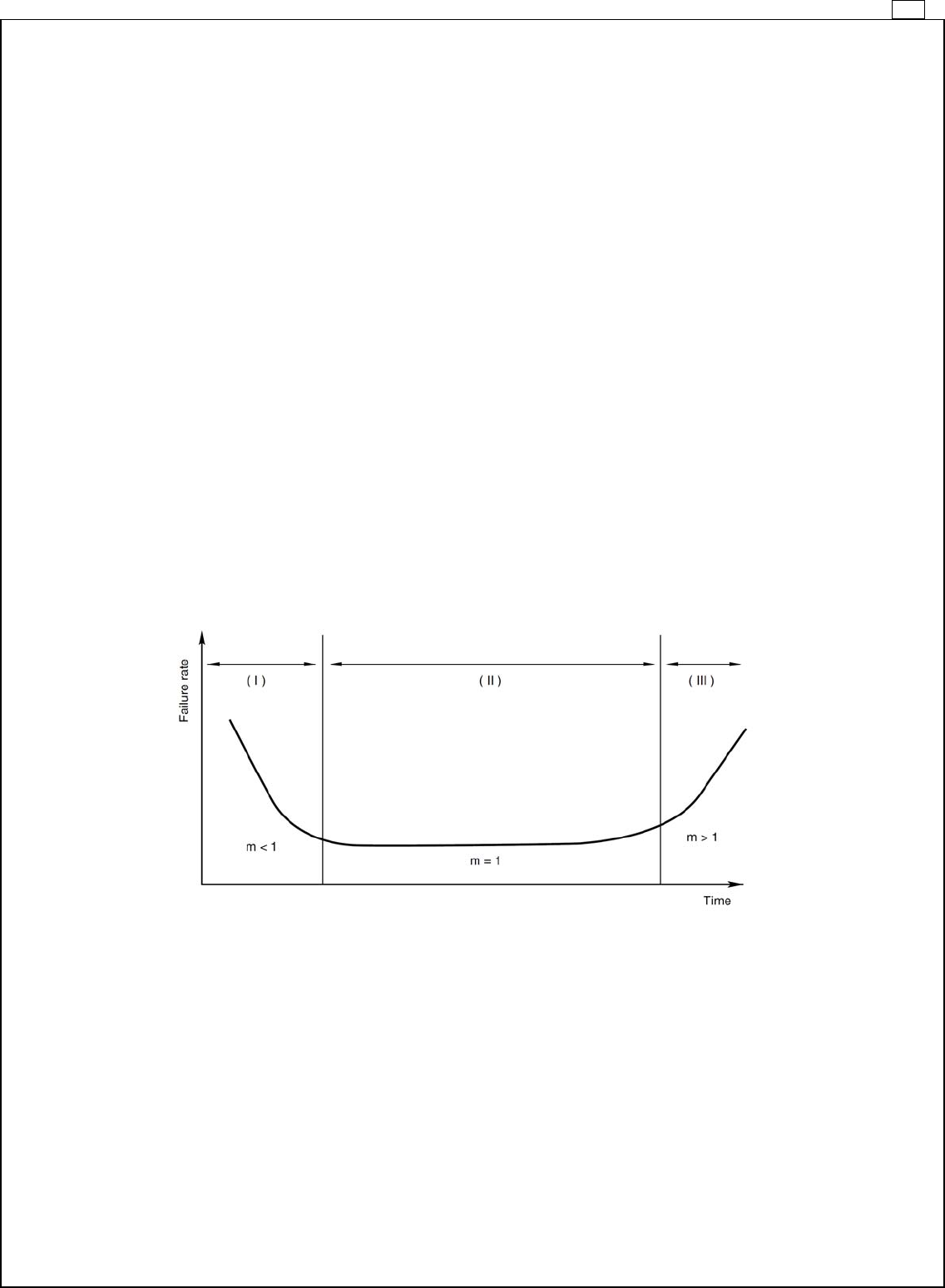
21
[3] Failure
1. What is Failure?
Failure is defined as a state of system, equipment, or component in which part of all of its functions are impaired or lost.
2. Bathtub Curve
Product's failure rate throughout its lifetime is depicted as a bathtub curve, as shown below. Failure rate is high at the beginning and end of
its service lifetime.
(I) Initial failure period
The high failure rate in the initial failure period is derived from latent design errors, process errors, and many other causes.. This
process is called debugging, performing aging or screening in order to find out initial failures.
(II) Accidental failure period
The initial failure period is followed by a long period with low, stable failure rate. In this period, called accidental failure period,
failures occurs at random along the time axis. While zero accidental failure rate is desirable, this is actually not practical in the real
world.
(III) Wear-out failure period
In the final stage of the product's service lifetime comes the wear-out failure period, in which the life of the product expires due to
wear of fatigue. Preventive maintenance is effective for this type of failure. The timing of a relay's wear-out failure can be predicted
with a certain accuracy from the past record of uses. The use of a relay is intended only in the accidental failure period, and this
period virtually represents the service lifetime of the relay.


















